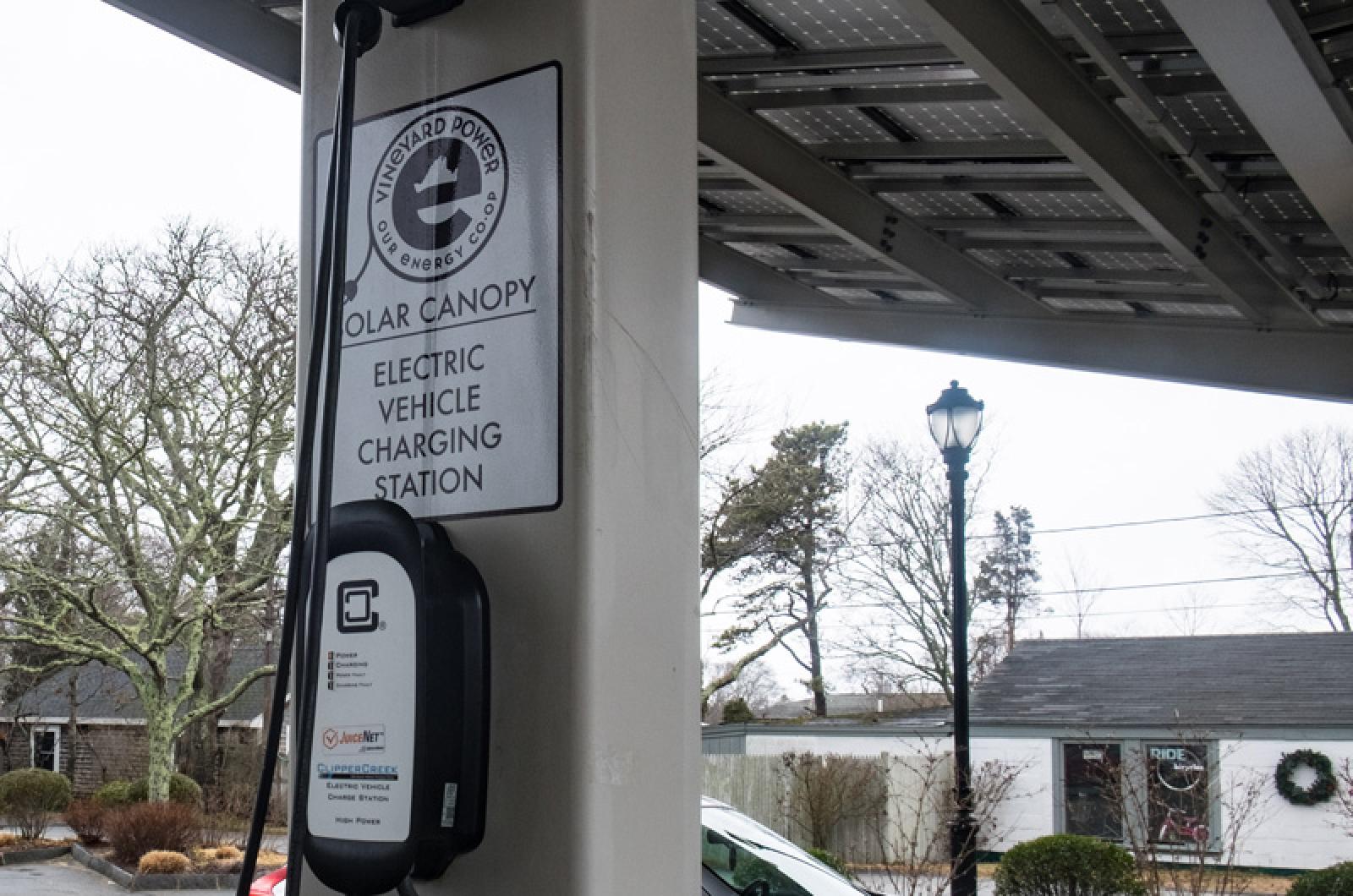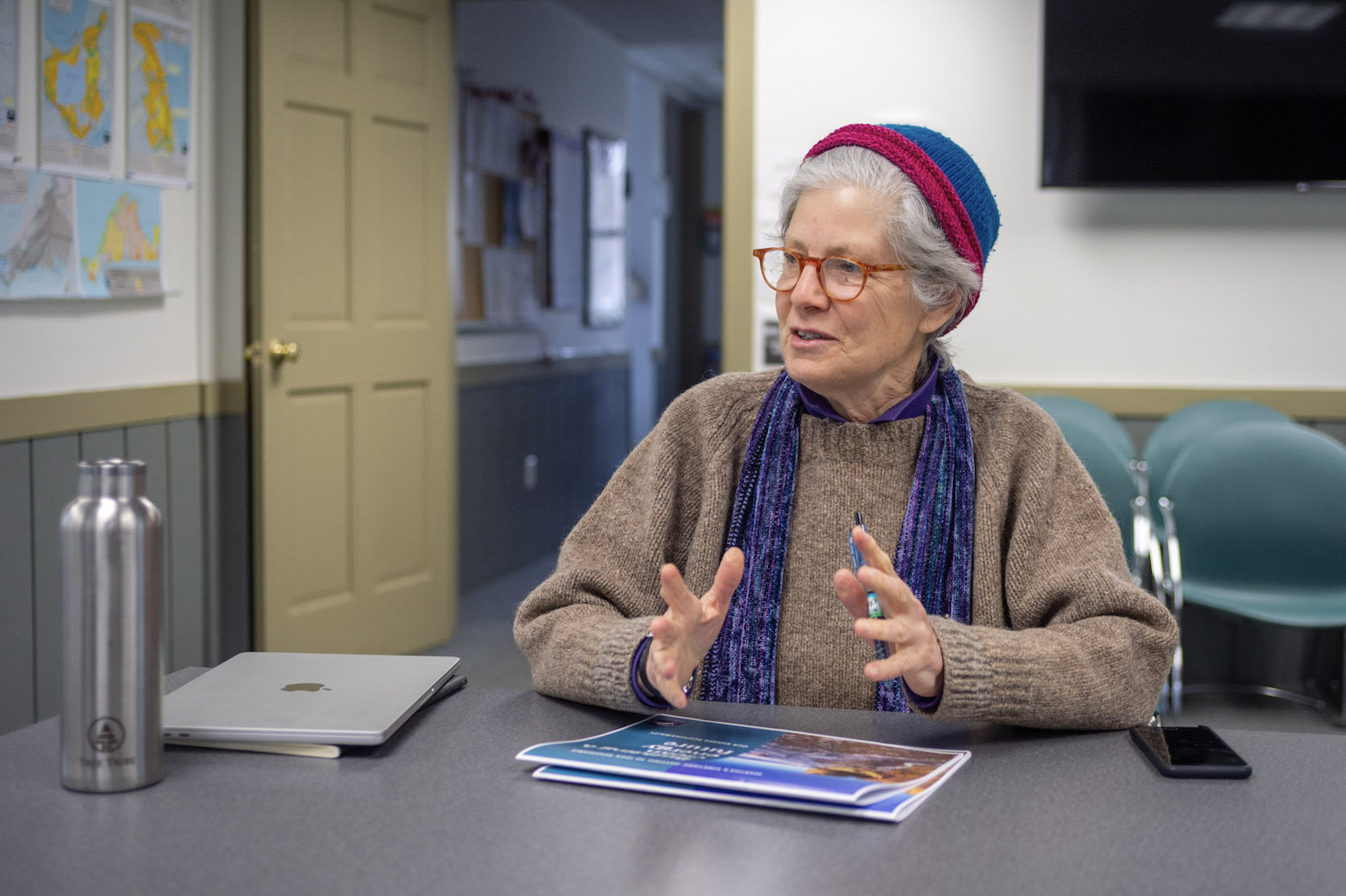Kate Warner is scared. The rate at which climate change is occurring terrifies her, and as energy planner for the Martha’s Vineyard Commission (MVC), she is trying to get Vineyarders to act.
“Climate change and the rate at which it’s occurring is phenomenally scary,” Ms. Warner said in a recent interview. “We’re ending our species' life on earth.”
This month, as part of her work with the MVC, she published a report called Getting to 100% Renewable. The document outlines the Island’s energy usage and what steps Vineyarders can take to be more environmentally conscious.
Since 2008, with the passing of The Global Warming Solutions Act, the state aims to reduce emissions by 2050 to 80 per cent below 1990 levels. In 2022, the state government released the Clean Energy and Climate Plan for 2050, which outlined the steps to bring emissions even lower.
The Island’s goal is to have 100 per cent renewable energy by 2040. Each town on Martha’s Vineyard passed non-binding resolutions in 2021-2022 that approved this goal.
According to Ms. Warner’s report, transportation tops the list of energy consumption on the Island, coming in at 45 per cent last year, including the use of over eight million gallons of gasoline. The Steamship Authority accounts for 14 per cent of the transportation piece, and 6.3 per cent of all Island energy use.
The report recommends electrifying vehicular transport as a key way to lower carbon emissions. According to the 2023 statistical profile, also produced by MVC, the number of hybrid and electric vehicles has slowly increased over the years. But the number is still quite low. In 2023, just under five per cent of registered cars on Martha’s Vineyard were electric and hybrid.
Ms. Warner hopes that the electric vehicle movement will follow solar energy in becoming more popular. Previously, Ms. Warner ran a business called Under the Sun which encouraged people to put in solar panels. She also founded the Vineyard Energy Project in 2003, which educated the public on solar energy and sustainability.
“You have these early adopters, right? They believe in the thing and they do it, regardless of the cost.... At a certain point, there were enough systems on the Vineyard and the price of solar dropped. There’s going to be a point where the price of electric vehicles drops and it takes off.”
Ms. Warner acknowledged that the Steamship Authority faces some hurdles in its quest to lower emissions.
“The challenge is, how can they have enough money to convert the vessels either to hybrid or all electric,” Ms. Warner said, explaining that the Steamship Authority’s business model limits how much money is available for the transition. While other ferry systems operate as part of a state’s department of transportation, the Steamship Authority relies on ticket sales for the entirety of their revenue.
Ms. Warner said she created Getting to 100% Renewable to educate Vineyarders and provide concrete steps they could take. She hopes it encourages people and businesses to act.
“I think we have to keep getting those messages out there and hope that we inspire people to work on it. That’s the only way we’re gonna get there.”
The Getting to 100% Renewable document is available in the Martha’s Vineyard Commission website.








Comments
Comment policy »